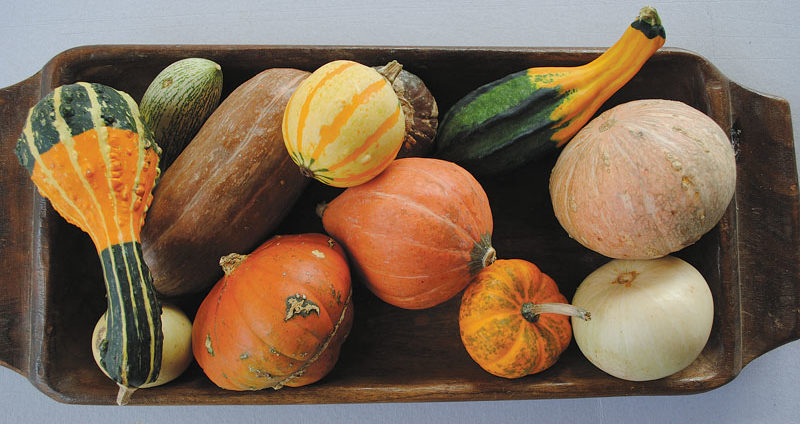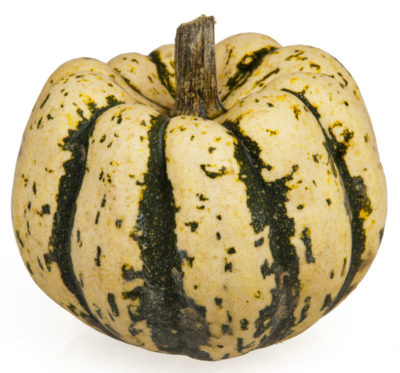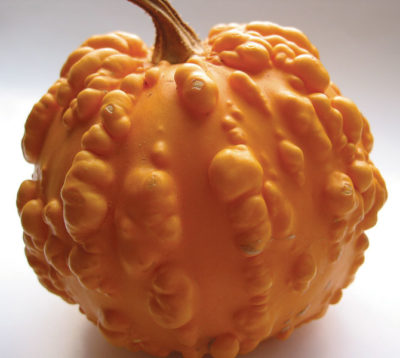 Wandering around those “U-Pick” farms dotted across Long Island, it’s easy to get lost in a pumpkin patch as you feverishly try to decipher the difference between a gourd and a squash and which, if any, are edible and which are mainly used as weird and warty window displays. ‘
Wandering around those “U-Pick” farms dotted across Long Island, it’s easy to get lost in a pumpkin patch as you feverishly try to decipher the difference between a gourd and a squash and which, if any, are edible and which are mainly used as weird and warty window displays. ‘
Each of those autumnal growths—gourds, squash and pumpkins—all come from the same family, Cucurbitaceae, which includes more than 700 species. According to the Missouri Botanical Garden, names differ throughout the world, but in the U.S., any round, orange squash used for pies or jack-o-lanterns is likely to be called a pumpkin. But the term “pumpkin” really has no botanical meaning, as they are actually all squash.  Squash are divided into two categories: tender or summer squash, and hard-skinned or winter squash. Examples of summer squash include zucchini, pattypan, straightneck, crookneck and other types. Winter squash include small to medium hard-skinned squash such as the acorn, small hubbard, miniature pumpkin and spaghetti types, as well as the large hard-skinned types, including banana, butternuts, cheese pumpkins and large hubbards, among others. Then there are the likes of Wildsippe Argentinien, Trombolino d’Albenga, Napolitaner Kürbis and Triambelkürbis and hundreds more that sound less like a gourd and more like a 15th-century explorer. But fear not on the farm, as you probably won’t find yourself trying to distinguish between two barely pronounceable species.
Squash are divided into two categories: tender or summer squash, and hard-skinned or winter squash. Examples of summer squash include zucchini, pattypan, straightneck, crookneck and other types. Winter squash include small to medium hard-skinned squash such as the acorn, small hubbard, miniature pumpkin and spaghetti types, as well as the large hard-skinned types, including banana, butternuts, cheese pumpkins and large hubbards, among others. Then there are the likes of Wildsippe Argentinien, Trombolino d’Albenga, Napolitaner Kürbis and Triambelkürbis and hundreds more that sound less like a gourd and more like a 15th-century explorer. But fear not on the farm, as you probably won’t find yourself trying to distinguish between two barely pronounceable species.
Delving back in time, hard-skinned, inedible gourds have been used in various ways throughout history with cultures spanning the globe fashioning gourds into bowls, cups, musical instruments, tools, artwork and birdhouses. Today—mostly on Etsy and Pinterest—gourds are commonly used for a vast array of crafts, including jewelry, furniture, dishes, utensils and a wide variety of decorations using carving, burning and other techniques.
 For anyone that would rather eat than craft, look to the squash. This healthy and versatile gift from the Earth can be used to make Parmesan-roasted acorn squash, butternut soup, acorn squash ravioli, risotto, squash ribbons and much more.
For anyone that would rather eat than craft, look to the squash. This healthy and versatile gift from the Earth can be used to make Parmesan-roasted acorn squash, butternut soup, acorn squash ravioli, risotto, squash ribbons and much more.
When it comes to the fall products of the local farm, follow this simple rule of thumb: If it’s a squash, eat it and if it’s a gourd, leave it—or take it home and put it on your window sill.


















